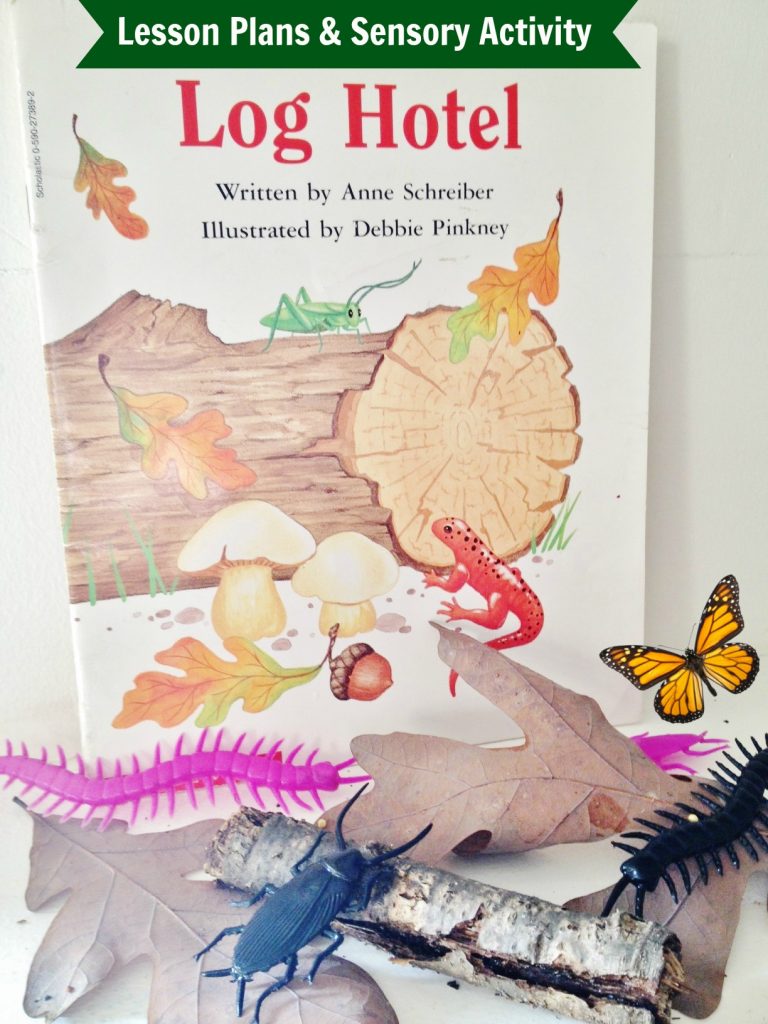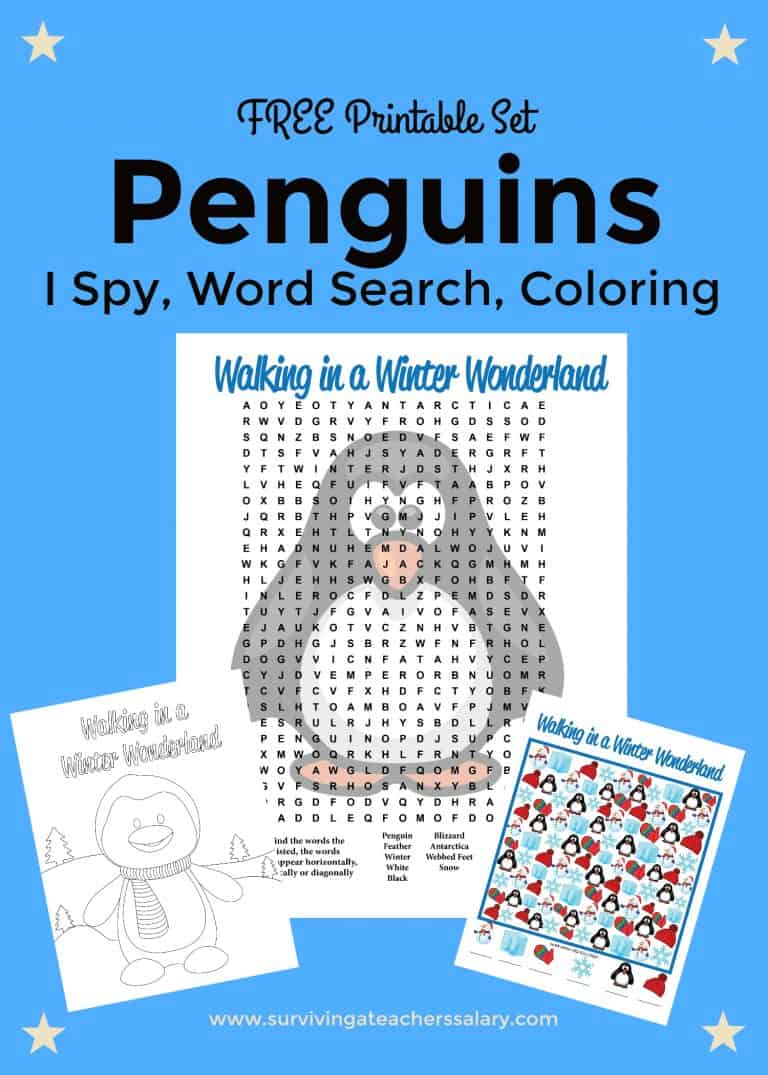Log Hotel Lesson Plans with Sensory Experience & Activities
This post may contain affiliate links, view our disclosure policy for details.
In the book Log Hotel what looks like a simple log is really an entire community of plants and critters hustling and bustling about in the middle of the forest. Page after page, children will get a look at an otherwise secret world in this beautiful non-fiction book by author Anne Schreiber. Aside from being entertaining Log Hotel is also the perfect tool for teaching a variety of academic concepts. It can be incorporated into many classroom or homeschooling lessons, or you can use it as a tool in your home just to connect to the text with your child on a deeper level.
Take a look below at some lesson plans perfect for use with Log Hotel!
Log Hotel Lesson Plans: For ages PreK-3
Supplies Needed:
Book, Log Hotel by Anne Shreiber
Construction paper
Poster board
Markers
Sand or dirt
Small tub
Wood log or thick branches
Fresh leaves, sticks, rocks, pinecones, and other backyard findings
You will use all of the above items with the lessons below, so keep them all gathered in one place for easy access. You can space these lessons out over several days or weeks, or you can do them all in one day if you have time! Do what best fits your needs.
Activity #1
Word Exploration
Supplies needed: Book, paper, markers
Objectives: Students will be able to identify and define the new vocabulary words present in the text.
Directions: Begin the lessons by reading the text out loud. Take frequent pauses to point out pictures that catch your eye, to comment on the various activities happening in the text, and to answer any brief questions the children may have.
1. To begin the word exploration, hand the text over to the child and ask them to point out any words they may not be familiar with. They can then write these words down on a piece of paper. Some of the words that they may write down will possibly be the vocabulary words: tunnels, mushrooms, ferns, woodpecker, salamander, decay and fungi. Make your own list of words to define that include these words.
2. Then, as a group discuss the words and their meanings. Define them together using a dictionary. Have they heard these words before? Can they make an educated guess about what the word might mean when using picture clues in the book? These are excellent questions and conversation starters.
3. Ask each child to chose one of the words and draw a simple illustration for it. You are now going to use this picture card as a wall dictionary. Hang each word along with the illustration on the wall for easy reference and enrichment later on.
4. Conclude the activity by reflecting on the new words, their meanings, and how they help tell the story.
Activity #2
Sequences in Storytelling
Supplies needed: Book, poster board, markers, construction paper
Objectives: Students will be able to understand and recognize sequential order in a text.
Directions: Take a few moments to browse through the book, pointing out how a sequence of events is taking place. A simple log is turned into a forest hotel as animals, plants, and critters move in and out of it. The sequence of events is intentional, and vital to the story.
1. To begin, define what the word “sequence” means. When have they heard this word? What does it have to do with storytelling? Write the word down so children can see what it looks like.
2. The sequence of events in Log Hotel is vital to the story, so now you want to create a timeline to show how these events happen. To do this, create a single line on your poster board. Make a few points on the line to mark events. Six or seven is plenty. Allow the children to flip through the book again and look for key events. This would include the tree falling, the woodpecker drilling holes, the skunk moving in, and eventually the log turning back into soil. Each of these events can be plotted on the time line. You can do this one of two ways. Older students can write a sentence that describes this scene, while younger children may want to make a simple sketch. Display the timeline for future reference and reflection.
3. Once the timeline is created, ask children to think about what additional sequence could be added to this story. Allow them to get as creative as possible. On a piece of construction paper, allow them to draw a picture depicting this scene. Perhaps they want to add a few ladybugs exploring the log into the sequence, or maybe a human coming along and sitting on it. Either way, allow them to express these ideas on paper.
4. Conclude the activity by allowing some time for questions, answers, and reflection.
Activity #3
Log Hotel Sensory Experience
Objectives: To create a three dimensional sensory experience to better understand the log hotel concept as well as strengthen fine motor skills.
Supplies needed: Sand or dirt, small tub, a wood log or thick branches, plastic bugs and critters, fresh leaves, sticks, rocks, pinecones, and other backyard findings.
Directions: For this activity, you want to create your own diorama of a log hotel! To do this, fill a small tub with sand or dirt. You will then place a log or thick branch into the bin. Add backyard findings such as pinecones, leaves, rocks, mushrooms, and twigs. Add a variety of plastic critters (check out your local dollar store) such as bugs, snakes, and worms to the mix. You will now start to see your diorama resemble a real log hotel! Allow children not only the chance to assemble this log hotel, but to really dive in and manipulate the materials. They can even act out the story moving the critters in and out of the log if they wish. They will love getting their hands dirty and creating their very own log hotel. As you can see, this simple non-fiction text is perfect for teaching a wide assortment of academic skills. Give some of these lessons a try and see how easy it is to understand the text in a way that is fun and exciting!
Amazon suggested materials:




What a fun idea I am sure the kids will love! Thanks for sharing!
What an excellent activity! I would have loved this back in the day I was teaching.